Table of contents
Paprika powder, hot, is a spice made from dried and ground red peppers to add spiciness to dishes. The hot taste comes from the capsaicin contained in the partitions and seeds of the pepper. Make sure it is organic quality.
Use in the kitchen
In contrast to sweet paprika powder, hot paprika powder, as the name suggests, has a much hotter taste. Paprika powder is just as popular in Arabic, Turkish and partly Indian cuisine as it is in Hungary and the Balkans. Overseas it is mainly used for Mexican dishes. The spice has a wide variety of uses, from vegan stews to vegetable stir-fries, soups, sauces and dips, and even salads. The spice tastes particularly delicious in lentil dishes, withcorn, potatoes, mushroom stir-fries, beans, white cabbage, red cabbage, celery (e.g. celery), pumpkin or carrots. It also gives popular dishes such as vegan Hungarian goulash or chili sin carne a hot, spicy note. Homemade ready-made mixes for falafel or patties (e.g. bulgur meatballs and vegan Çiğ Köfte) and Asian spice pastes can be spiced up with paprika powder. Together with limes, it gives many dishes a fresh, piquant aroma.
There is even a technical term for the use of paprika powder in cooking, so-called "paprizing". Paprika powder also combines excellently with other dried spices such as oregano, basil, thyme or rosemary.
When frying, you should be careful not to expose the powder to high temperatures, e.g. adding it to hot fat, as it burns easily and results in a bitter aftertaste. Furthermore, you should add paprika powder to dishes at an early stage of cooking, otherwise only the color will change, but the taste will remain largely unaffected, as the ingredients will no longer absorb the powder properly.
It is difficult to verify whether the paprika powder sold in stores is a raw food product. 1 Generally, the term "raw food" is not subject to any controls and is associated with a great deal of trust in the producers. If you want to be sure, it may be worth making the paprika powder yourself.
Your own preparation
What is paprika powder made of? The spice is usually made from spice peppers, such as pointed peppers, chili peppers or red bell peppers. You can make the powder yourself in just a few steps. For around 30 g of hot paprika powder, you need 2 bell peppers (red) and 2 chili peppers (e.g. peperoncini). It is worth using slightly wilted and soft specimens to reduce food waste. To retain as much vitamin C as possible, dry the vegetables at 40-50 °C, ideally in a dehydrator or in an oven with a convection function. The oven light switched on can sometimes be sufficient for this.
The paprika powder is made in five steps:
- Wash the sweet peppers, remove the seeds and cut into thin strips. Wash the chili peppers and cut them in half. Leave the seeds and plantar tissue depending on the desired level of spiciness. The rule here is: the more you dry, the hotter the taste will be.
- Place the vegetable pieces, skin side down if possible, on a baking sheet and dry them in the oven or dehydrator. This process can take several hours.
- As soon as the pieces can be broken, the drying process is complete.
- Finely grind dried vegetable pieces in a blender or mortar and add 1-2 pinches of salt and additional dried herbs (eg oregano, basil, thyme) depending on the desired taste. Salt also extends the shelf life.
- Sift the paprika powder as needed and use slightly larger flakes for separate seasoning.
Store finished paprika powder in an airtight screw-top jar or spice shaker.
Vegan recipe for pepper and apple salad with paprika powder
Ingredients (for 4 people): 4 red bell peppers, 2 apples, 1 bunch of spring onions, 100 gpumpkin seeds, 2 tbsp rapeseed oil (cold-pressed), 1 tbsp hot paprika powder (organic), salt andblack pepper to taste.
Preparation: Wash the bell peppers, remove the seeds and cut into strips. Wash the apples, remove the seeds and cut into strips. Cut the spring onions into thin rings. Roughly chop the pumpkin seeds. Mix all ingredients in a large bowl. Mix the rapeseed oil, paprika powder, salt and pepper in a small bowl and pour over the salad.
Vegan recipes with paprika powder (hot) can be found under the note: " Recipes that have the most of this ingredient ".
| Not only vegans or vegetarians should read this: Vegans often eat unhealthily. Avoidable nutritional errors. |
Purchasing - Storage
Paprika powder (hot) is available all year round at Coop, Migros, Denner, Volg, Spar, Aldi, Lidl, Rewe, Edeka, Hofer, Billa. Occasionally it is even available in organic quality from large retailers; but it is most likely to be available in organic supermarkets such as Denn's Biomarkt and Alnatura. In addition, health food stores or delicatessens as well as online retailers offer opportunities to buy hot paprika powder in organic quality.
The availability of paprika powder (hot) varies depending on the size of the store, catchment area, etc. Our recorded food prices for the DA-CH countries can be found above under the ingredient image - and by clicking on them you can see their development at various suppliers.
Storage tips
It is advisable to store both homemade and commercially available paprika powder in a cool, dark and, above all, dry place. The powder usually has a shelf life of up to 6 months. If it smells as usual, it can be used beyond its best-before date, like many other spices.
Ingredients - Nutritional values - Calories
Here we realistically show you the ingredients of spices and herbs per 1 g (instead of per 100 g as usual).
1 g of hot paprika powder contains hardly any fat (0.13 g), protein (0.14 g) and carbohydrates (0.54 g). The powder provides 2.82 kcal of energy per 1 g. 2
Vitamin A, vitamin E and vitamin B6 are the most important essential nutrients that paprika powder (hot) offers. 2 However, because of the small amount consumed, they and the macronutrients do not contribute significantly to covering the respective daily requirement. The secondary plant substances in this ingredient are far more important for the health value. Since all herbs and spices have many health-promoting ingredients, we deliberately avoid the term superfood here.
The complete ingredients of paprika powder (hot), the coverage of the daily requirement and comparison values with other ingredients can be found in our nutrient tables. In the article Nutrients explained you will get a detailed insight into the topic.
Health effects
Is paprika powder healthy? Paprika powder contains high amounts of pro-vitamin A (β-carotene; beta-carotene). Beta-carotene is a precursor to vitamin A, which is only found in fruit and vegetables and can be converted by the body into vitamin A. Vitamin A is involved in numerous physiological processes. These include seeing in the dark, the development of the cornea and conjunctiva, the growth and differentiation of cells, the function of the immune system, the development of bones and the fetus, and the formation of the central nervous system (CNS). 3 Beta-carotene is one of the carotenoids, which are natural pigments that cause a yellow to reddish color. 4 It is therefore mainly found in red and orange fruit and vegetables, such as sweet peppers and chilies, and their processed products. 3 In a study comparing different paprika powders, samples from organic production showed more beta-carotene than those from conventional cultivation. Organic chili powder, on the other hand, contained the highest amount of beta-carotene, followed by smoked, hot and sweet paprika powder. 5
Whether sweet or spicy, paprika powder is a good source of various carotenoids and polyphenols. The most important carotenoids contained in paprika powder are beta-carotene, capsorubin, capsanthin, lutein, zeaxanthin and violaxanthin. They have health-promoting properties and can prevent chronic diseases such as various types of cancer, cardiovascular disease, type 2 diabetes and arteriosclerosis. Several studies have shown that organically produced vegetables have more bioactive compounds than conventionally grown vegetables. The main phenolic compounds in peppers are flavonoids and phenolic acids. In recent years, they have attracted much attention due to their antioxidant properties and their probable role in the prevention of various diseases. 5
Hot paprika powder also contains higher amounts of the alkaloid capsaicin. This is responsible for the perceived spiciness of different types of paprika. Hotter types of paprika are used for hot paprika powder, such as peperoncini. Capsaicin is characterized by anti-cancer, antimicrobial, antioxidant, diuretic, analgesic and anti-obesity properties. 6 If you compare different paprika powders with each other, chili powder contains the highest concentration. Followed by hot, smoked and sweet paprika powder. 5
Dangers - Intolerances - Side effects
People with a rare allergy to nightshade plants can react allergically or with intolerances to the consumption of paprika powder. The allergy spectrum is individual and can change over time. 7 However, the development of cross allergies is also possible, e.g. based on existing allergies to birch pollen, grass pollen, cereal pollen or mugwort pollen. 7,8
Together with black pepper, cumin, turmeric, oregano and saffron, chili powder and paprika powder are very susceptible to fraud and food adulteration. In 2021, the Joint Research Center ( JRC), commissioned by the EU Commission, carried out an analysis of 1,885 samples of six different herbs and spices and classified 6% of the paprika powders examined as being at risk of adulteration. The use of ingredients, additives, colorants or other components that are not approved for use in food and/or herbs and spices or are approved but not declared, as well as the omission of valuable ingredients, were among the most common fraudulent measures. Unauthorized dyes were detected in 10 of the 27 suspect samples, five samples had a total ash content of more than 10% and the remaining suspect samples contained undeclared plant species. In most cases these were maize ( Zea mays), carrot ( Daucus carota), tomato ( Solanum lycopersicum), sunflower seeds ( Helianthus annuus) and Allium spp. (e.g. onion or garlic). 9
Is too much paprika powder unhealthy? Higher doses of capsaicin can lead to mucous membrane irritation, nausea, vomiting or high blood pressure. Serious poisoning can occur more quickly, particularly in children. The German Federal Institute for Risk Assessment states, however, that no health disadvantages are to be expected within the scope of internationally usual consumption. 10 However, peppers from conventional agriculture and products made from them can contain higher amounts of pesticide residues. In organically produced peppers, the residues are usually lower or non-existent. 11
Ecological footprint - animal welfare
The ecological footprint of a food depends on various factors. The type of agricultural production (conventional vs. organic), seasonal, regional or domestic production or import by truck, ship or plane, different types of packaging and whether the goods are fresh or frozen all play a decisive role. 12
One kg of bell peppers has a CO 2 footprint of around 0.6 kg CO 2 eq/kg. 12 For chili peppers, the value is slightly higher at 1.02 kg CO 2 eq/kg. 13 ETH Zurich has measured the global biodiversity loss due to land occupation of the products that are most commonly consumed in Switzerland. These include bell peppers (peppers) and chili peppers. Products from Sri Lanka are notable with a biodiversity loss of 2.47 gPDF-eq per kg, compared to chilies and peppers from Spain, whose value is 0.05 gPDF-eq per kg. 14
The water footprint for 1 kg of green chilies and peppers is a total of 379 litres. 15
In general, fresh, unpackaged, seasonal and regional vegetables have the lowest emissions. The more a food is processed, the worse its ecological footprint is. This is why paprika powder tends to have a worse CO2 balance.
Worldwide occurrence - cultivation
For information on the origin and cultivation of sweet peppers and chilies, please refer directly to the respective articles on the ingredients, e.g. sweet peppers, red or chili peppers, red. Spanish sailors originally brought the pepper to Europe from Mesoamerica. It reached Eastern Europe and Hungary via Turkey, where it was declared the national vegetable. 16 Today, paprika powder is mainly produced in Hungary, Spain and Brazil. 17
Industrial production
The commercial production of paprika powder is fundamentally no different from the steps involved in making it yourself. Since the production of spices does not have to take place in the country in which the plant is grown, an initial quality control is usually carried out on site before the goods are shipped. A second check takes place after the raw materials arrive in the destination country, before further processing. During the production process, the top priority is to avoid contamination by bacteria, germs, etc., and special disinfection processes are sometimes used. 18 After the peppers have been washed and mechanically chopped, the drying process takes place. This takes place differently depending on the manufacturer and can take place in drying chambers, drying trays, or directly on the conveyor belt. Depending on the case, temperatures of 70 to 100 °C are reached here. After drying, the powder is ground using a series of horizontal millstones. Care is taken to ensure that the mills do not heat up too much so that the essential oils do not evaporate too quickly and important aromas are lost. At the end of the grinding process, the powder is sieved to be packaged in the final step. 1
Further information
For the manufacture of conventional paprika powder, pepper varieties of the species Capsicum annuum, which belong to the nightshade family (Solanaceae), are generally used. Varieties that are characterized by thin flesh and a high dry matter content are suitable for this. The degree of spiciness and aroma vary depending on the composition of the powder, namely the type of pepper, the proportion of seeds and partitions that give it the spice.
A division into different quality classes originates from Hungary: delicatessen paprika (aromatically mild), noble sweet (mild), semi-sweet (significantly hotter), rose paprika (aromatically hot) and hot (very hot). Depending on the country, other degrees of spiciness and flavor are also available. As a rule, an increased degree of spiciness correlates with the decreasing intensity of the red color of the powder. 16 Delicatessen paprika powder is sometimes considered the "best paprika powder." Cayenne pepper, on the other hand, consists of dried and ground chili fruits of the cayenne variety. Chili powder, on the other hand, usually contains a mixture of different spices in addition to chili, such as cayenne pepper, cumin, oregano and garlic.
Alternative names
In English, hot paprika powder is called "hot paprika powder".
Bibliography - 18 Sources
| 1. | Rubinpaprika com: How is Spice Paprika produced? |
| 2. | USDA United States Department of Agriculture. |
| 3. | Carazo A, Macáková K, Matoušová K, Krčmová LK, Protti M, Mladěnka P. Vitamin a update: forms, sources, kinetics, detection, function, deficiency, therapeutic use and toxicity. Nutrients. 2021;13(5):1703. |
| 4. | Chemie de: Carotinoide. |
| 5. | Ponder A, Kulik K, Hallmann E. Occurrence and determination of carotenoids and polyphenols in different paprika powders from organic and conventional production. Molecules. 2021;26(10):2980. |
| 6. | Hernández‐Pérez T, Gómez‐García M del R, Valverde ME, Paredes‐López O. Capsicum annuum (hot pepper): An ancient Latin‐American crop with outstanding bioactive compounds and nutraceutical potential. A review. Comp Rev Food Sci Food Safe. 2020;19(6):2972–93. |
| 7. | Gesundu de: Nahrungsmittelallergie auf Nachtschattengewächse. 2019. |
| 8. | Ernaehrung de: Nahrungsmittelallergien-Pollen. |
| 9. | European Commission. JRC Technical Report - Results of an EU wide coordinated control plan to establish the prevalence of fraudulent practices in the marketing of herbs and spices. 2021:1-32. |
| 10. | Bfr.bund de: Zu scharf ist nicht gesund - Lebensmittel mit sehr hohen Capsaicingehalten |
| 11. | Niedersächsisches Landesamt für Verbraucherschutz und Lebensmittelsicherheit. Pflanzenschutzmittelrückstände in Gemüsepaprika Ergebnisse aus dem Jahr 2019. 2020. |
| 12. | Reinhardt G, Gärtner S, Wagner T. Ökologische Fussabdrücke von Lebensmitteln und Gerichten in Deutschland. Institut für Energie- und Umweltforschung Heidelberg ifeu. 2020:1-22. |
| 13. | Concito. Denmark's green think tank. The big Climate Database. Version 1. Pepper, hot chili, raw. |
| 14. | Zhiyenbek A, Beretta C, Stoessel F, et al. Ökobilanzierung Früchte- und Gemüseproduktion - eine Entscheidungsunterstützung für ökologisches Einkaufen. ETH Zürich. 2016. |
| 15. | Mekonnen MM, Hoekstra AY. The green, blue and grey water footprint of crops and derived crop products. Hydrol. Earth Syst. Sci. 2011; 15: 1577-1600. |
| 16. | Pflanzen-lexikon com: Paprika (Capsicum). |
| 17. | Vom-achterhof de: Paprika - edelsüss oder rosenscharf. 2021. |
| 18. | Gewuerzindustrie de: Veredelung in der Gewürzindustrie. |

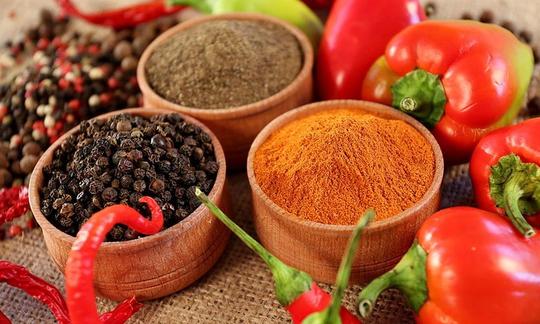

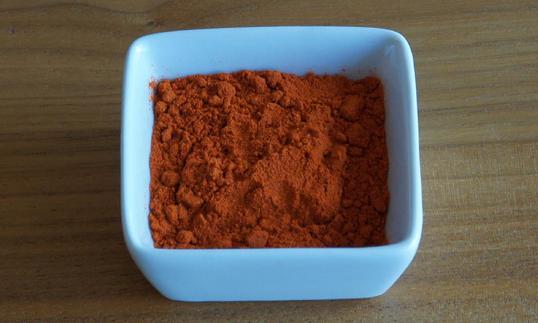

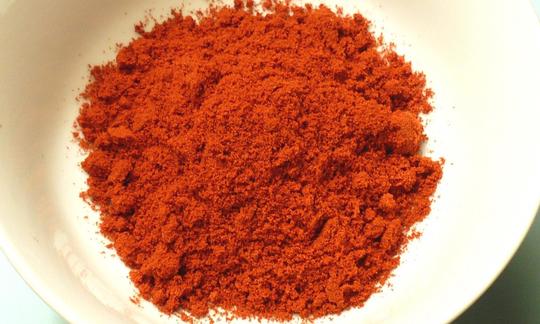

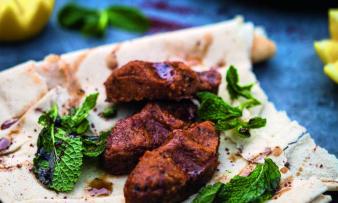
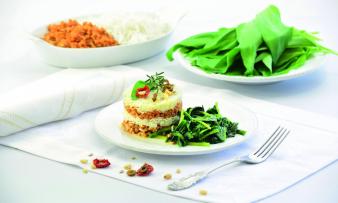


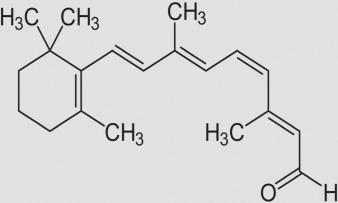



Comments